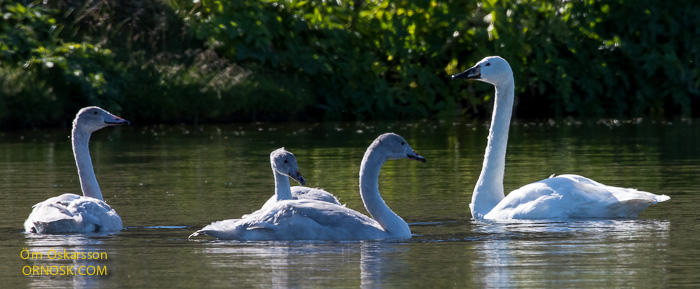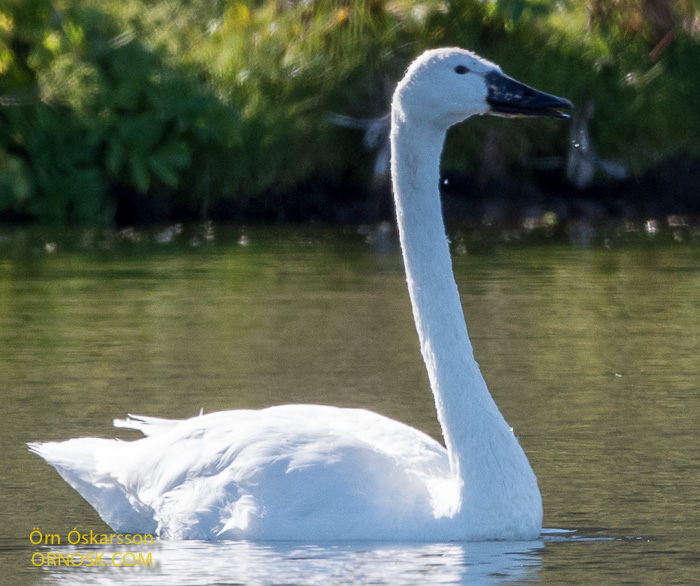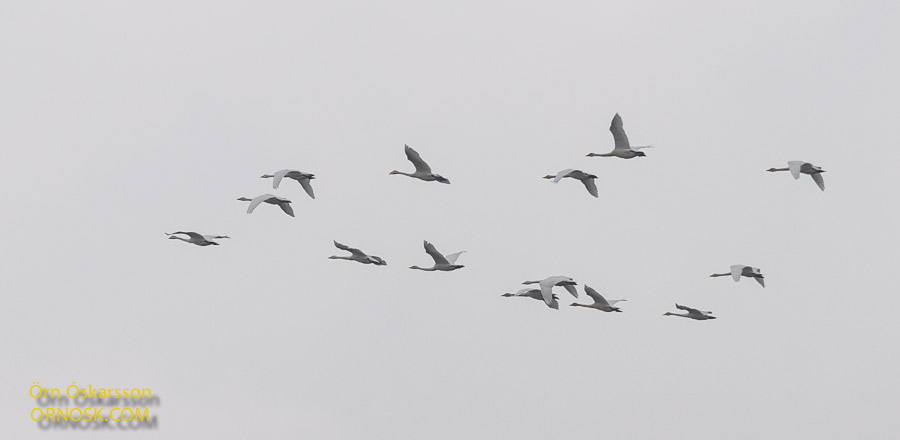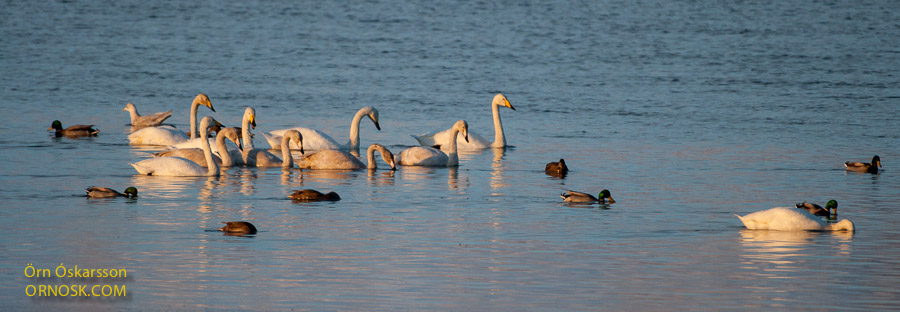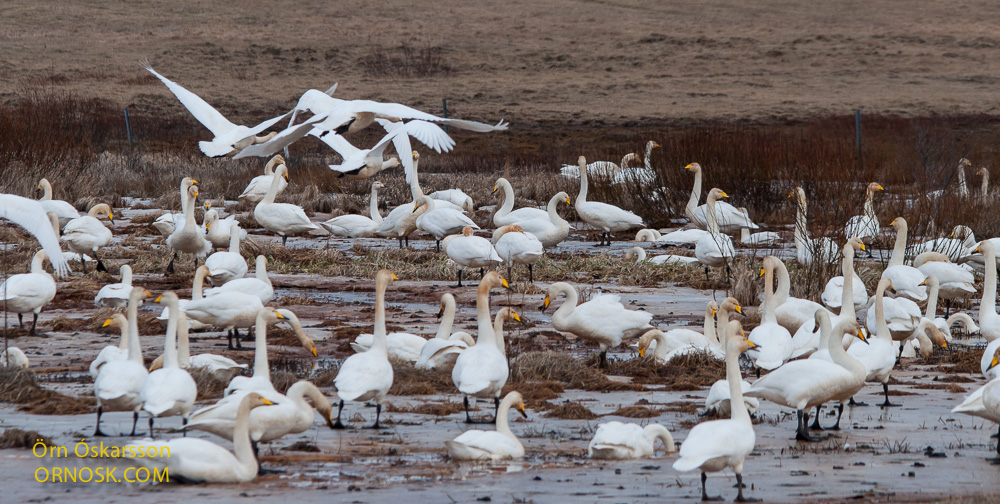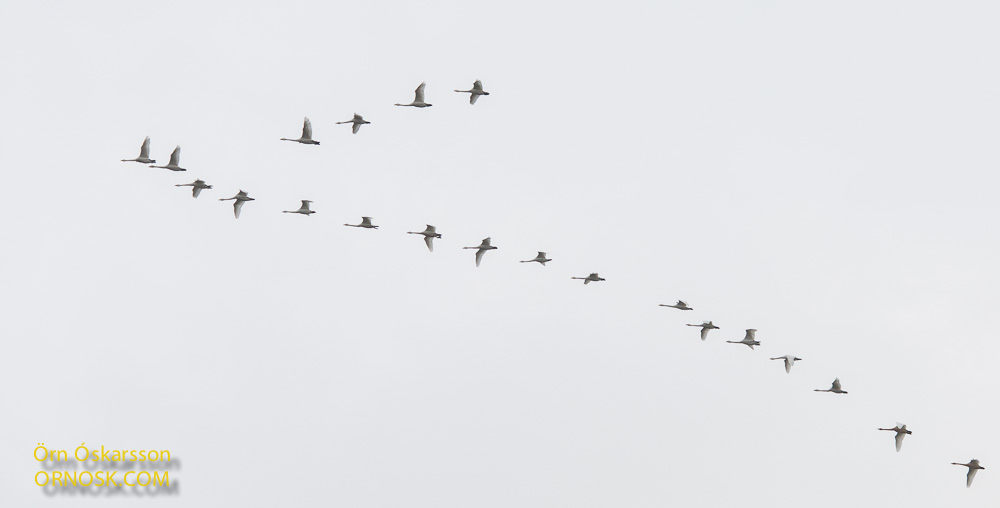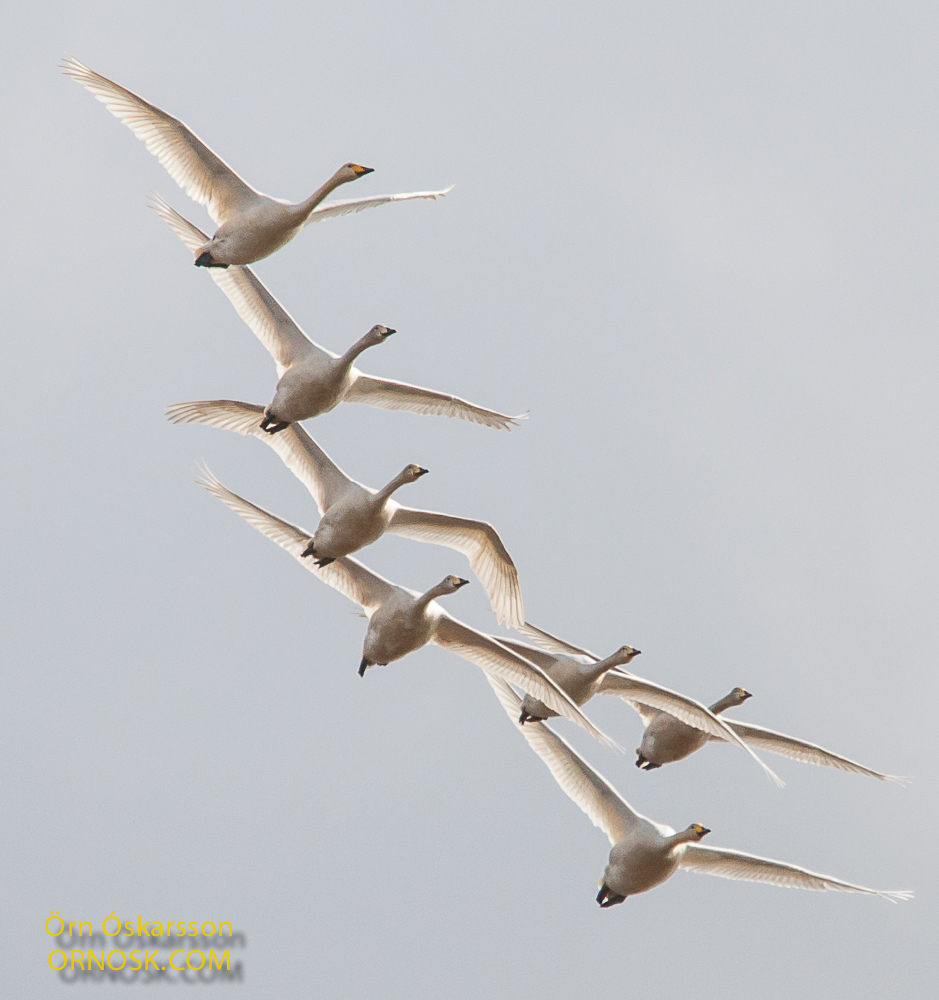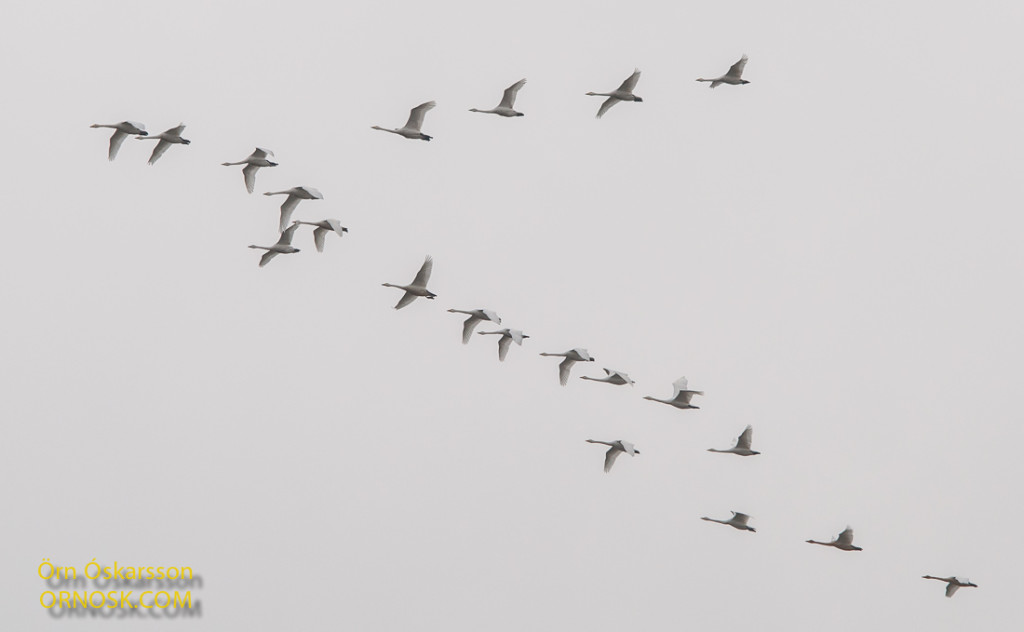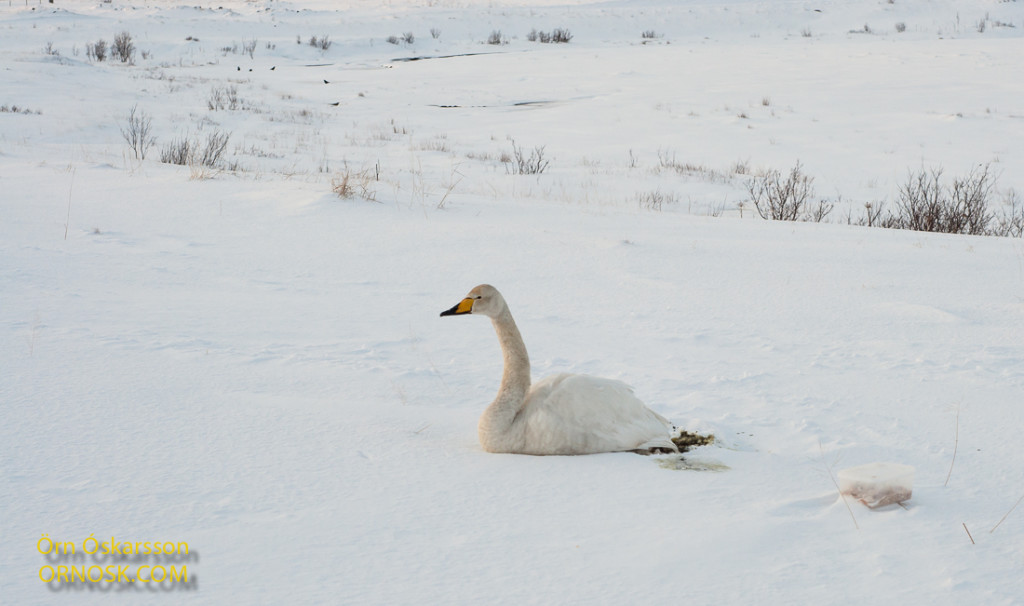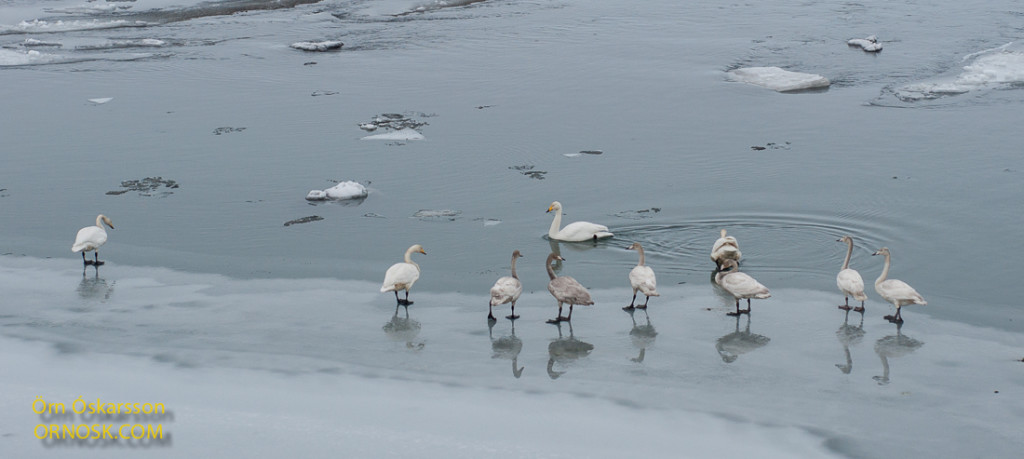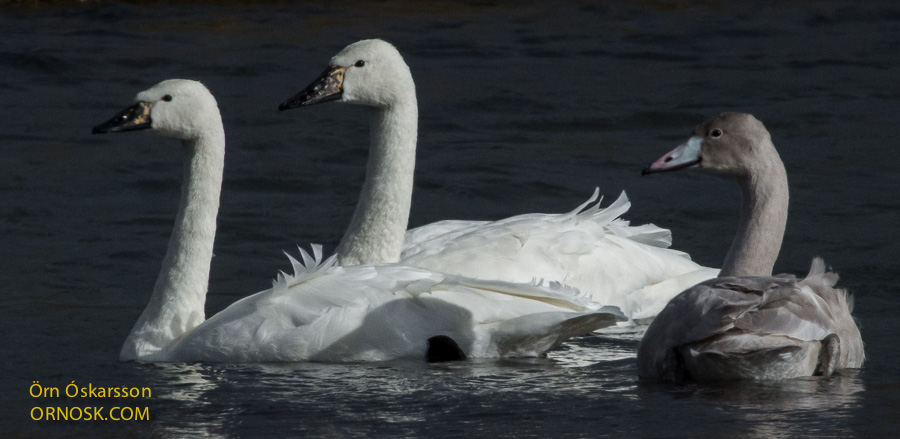
A few years ago we noticed a pair of Swans that were different from the Whooper Swans that usually breed in Veidivotn Lakes in the Southern Interior of Iceland. Since then we have been observing the pair that comes back to the same lake to breed, raising two to three chicks every summer.
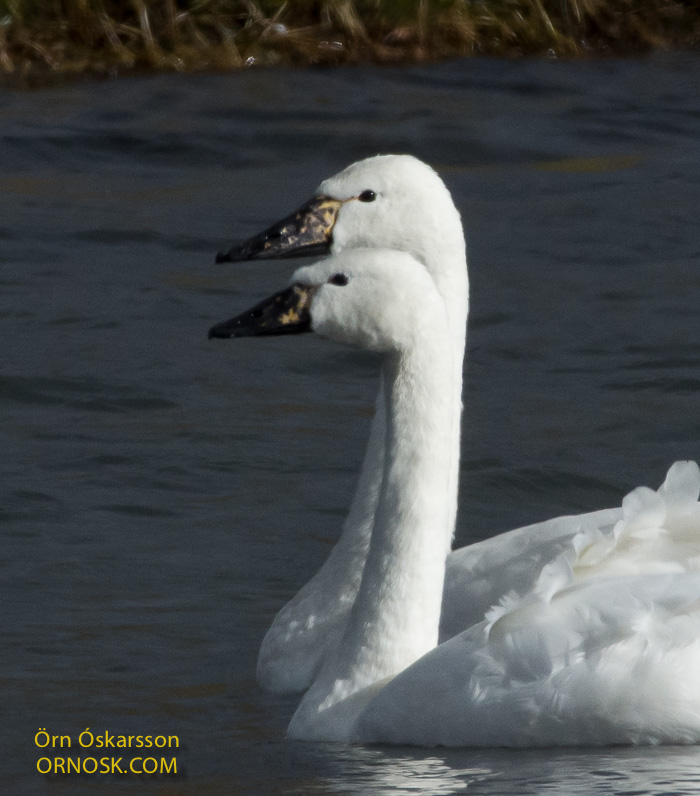
The Whooper Swan is the only species that breeds in Iceland but these Swans in Veidivotn Lakes are smaller, more delicate and have a black bill without any or little yellow. They are also quieter and not as shy.
Some speculation has been ongoing concerning the identification of this breed of Swans, without any definite result. They are similar but not identical to either the Bewick’s Swan or the Tundra Swan. According to ornithologists they are possibly a local genetic aberration from the Whooper Swan.
On a field trip last summer seven Swans like these were found in the Veidivotn Lakes area, three paired with ordinary Whooper Swans and two where both had these same characteristics. Whatever they are we will continue to observe them and see how they fare.

